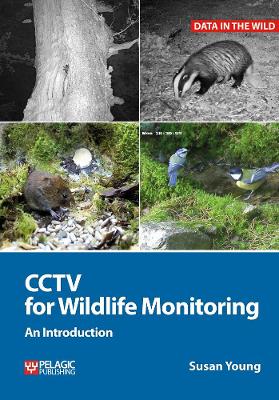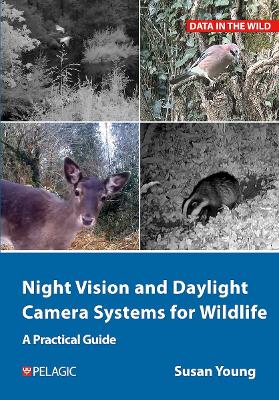Data in the Wild
2 total works
CCTV for Wildlife Monitoring is a handbook on the use of CCTV in nature watching, conservation and ecological research. CCTV offers a unique ability to monitor wildlife in real time, stream video to the web, capture imagery of fast-moving species or cold animals such as wet otters or fish and maintain monitoring over long periods of time in a diverse array of habitats. Wildlife watchers can take advantage of a huge range of CCTV cameras, recording devices and accessories developed for use in non-wildlife applications. CCTV allows intimate study of animal behaviour not possible with other technologies.
With expert experience in engineering, photography and wildlife, Susan Young describes CCTV equipment and techniques, giving readers the confidence to tackle what initially may seem technically challenging. The book enables the reader to navigate the technical aspects of recording: basic analogue, high definition HD-TVI and IP cameras, portable CCTV, digital video recorders (DVR) and video processing by focusing on practical applications. No prior knowledge of CCTV is required – step-by-step information is provided to get anyone started recording wildlife.
In-depth methods for recording foxes, badger, deer, otters, small mammals and fish are also included, and the book makes comparisons with trail cameras where appropriate. Examples of recorded footage illustrate the book along with detailed diagrams on camera set-ups and links to accompanying videos on YouTube. Case-studies show real projects, both the equipment used and the results.
This book will be of interest to amateur naturalists wishing to have a window into the private world of wildlife, ecological consultants monitoring protected species and research scientists studying animal behaviour.
Only a small proportion of our most interesting wildlife is observed by naturalists. This book describes how, with the use of well-developed and reliable technology, animals can be filmed in a non-intrusive way without disturbing behaviour. Step-by-step, clearly illustrated details lead the reader past technical challenges and allow many new insights.
From bats to badgers, from hedgehogs to deer, whether by night or in the daytime, remote cameras adapted from security systems provide an ideal way to record and monitor behaviour over long periods. At a time when much of our wildlife is fast disappearing from the landscape, the need for more knowledge is especially important. Divided into sections covering different approaches and species groups, this guide offers a variety of unique and valuable tools to aid greater understanding. It will be helpful for anyone who wants to harness the power of technology to increase their understanding of wildlife, from the professional ecologist to the amateur field naturalist or keen wildlife gardener.

